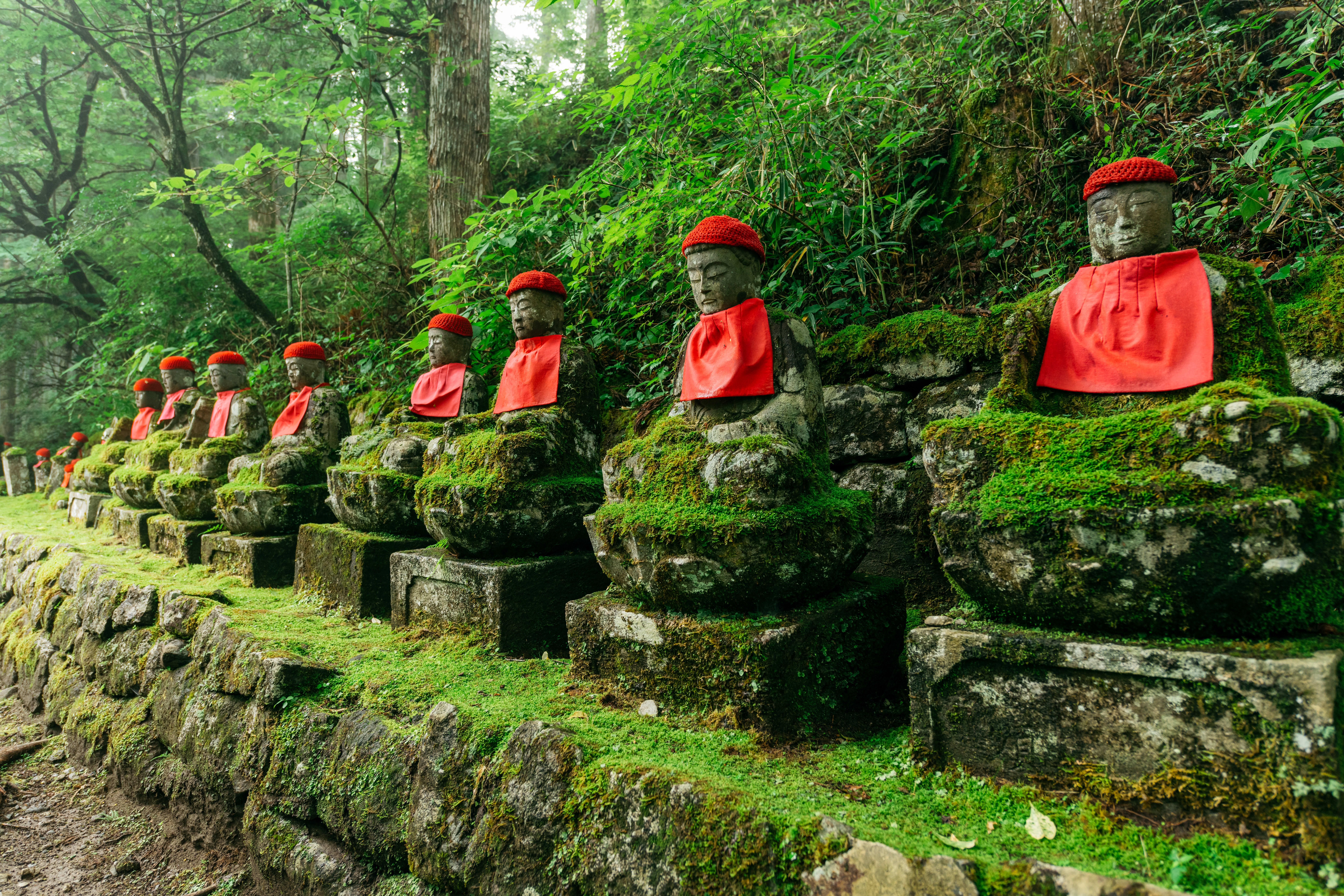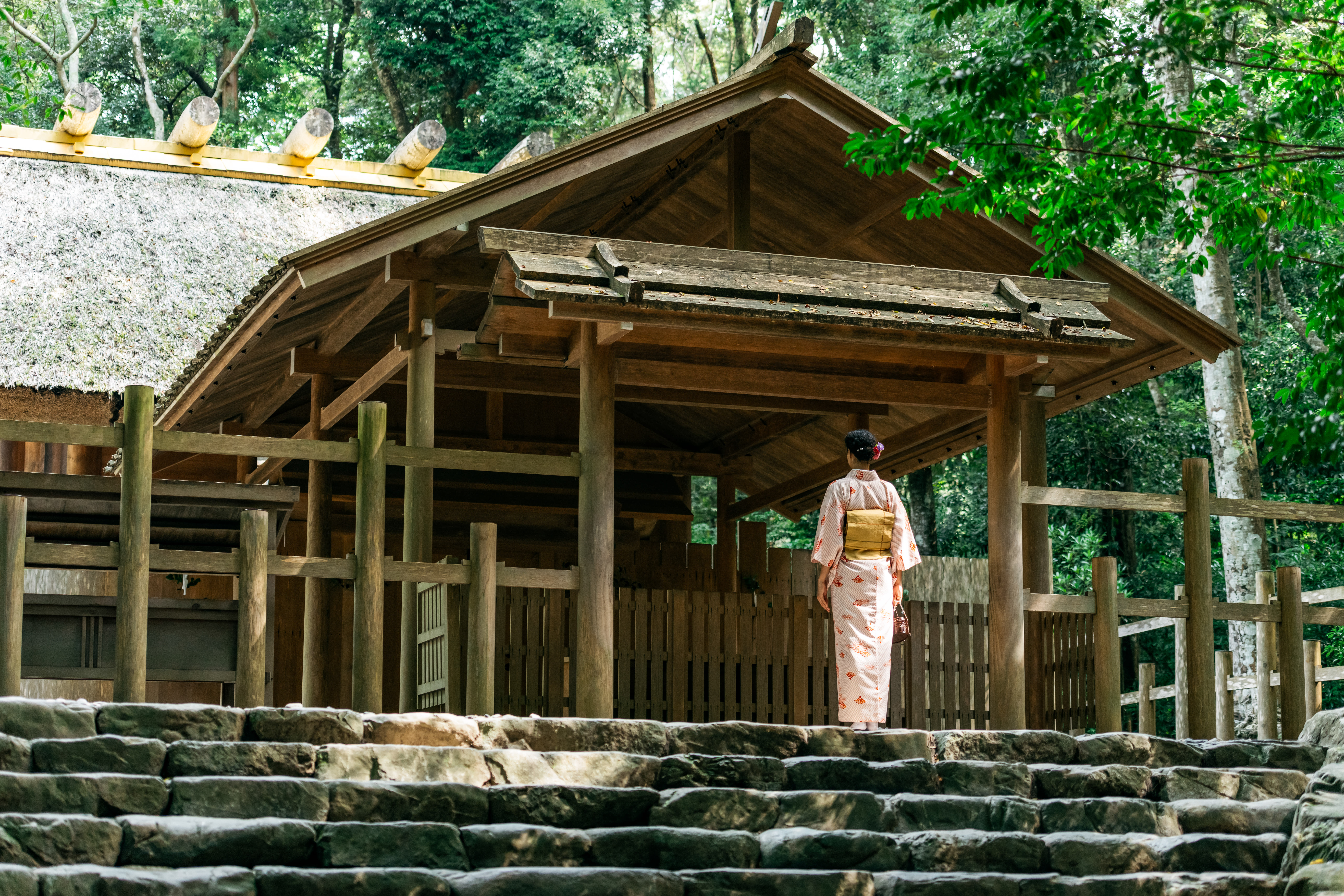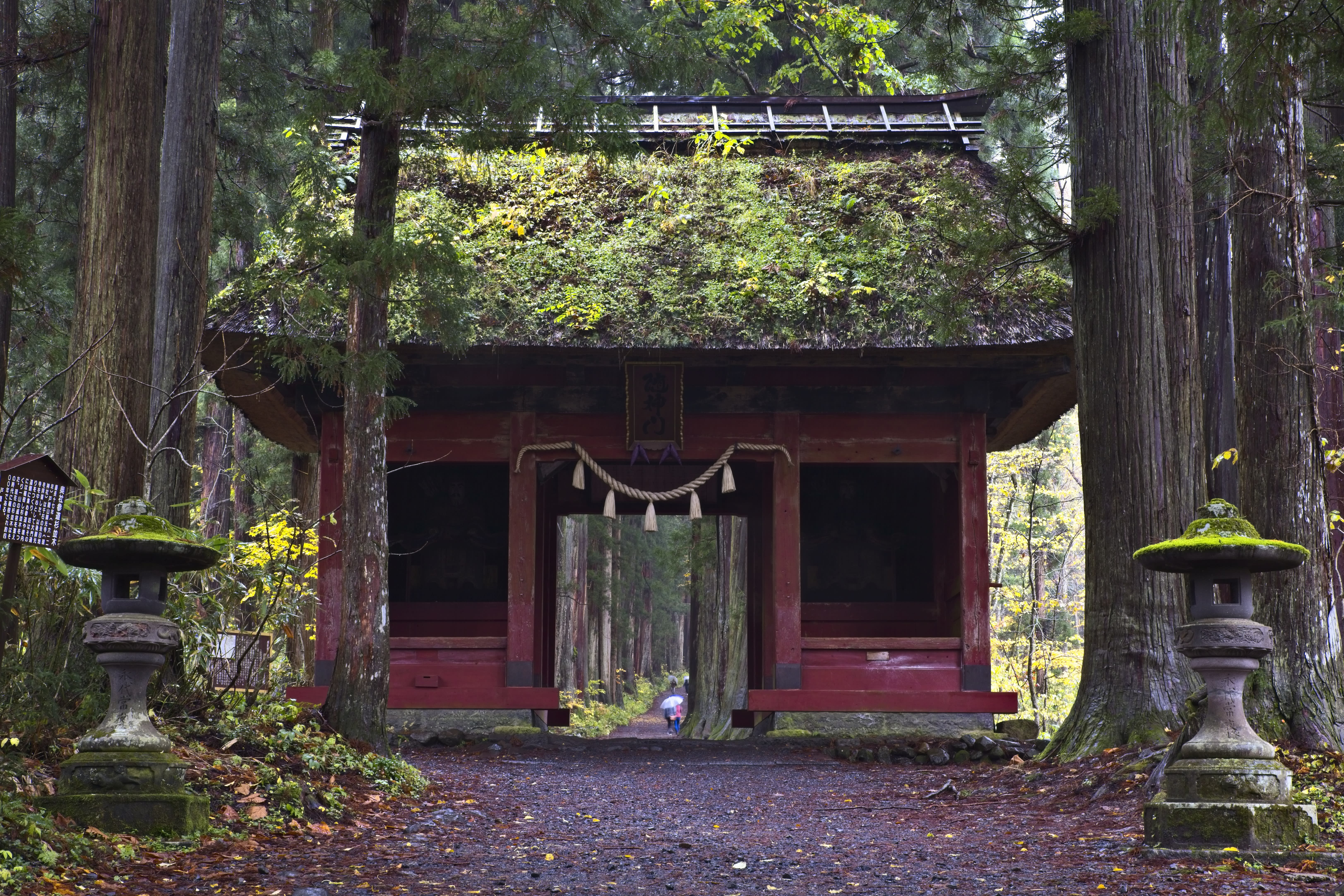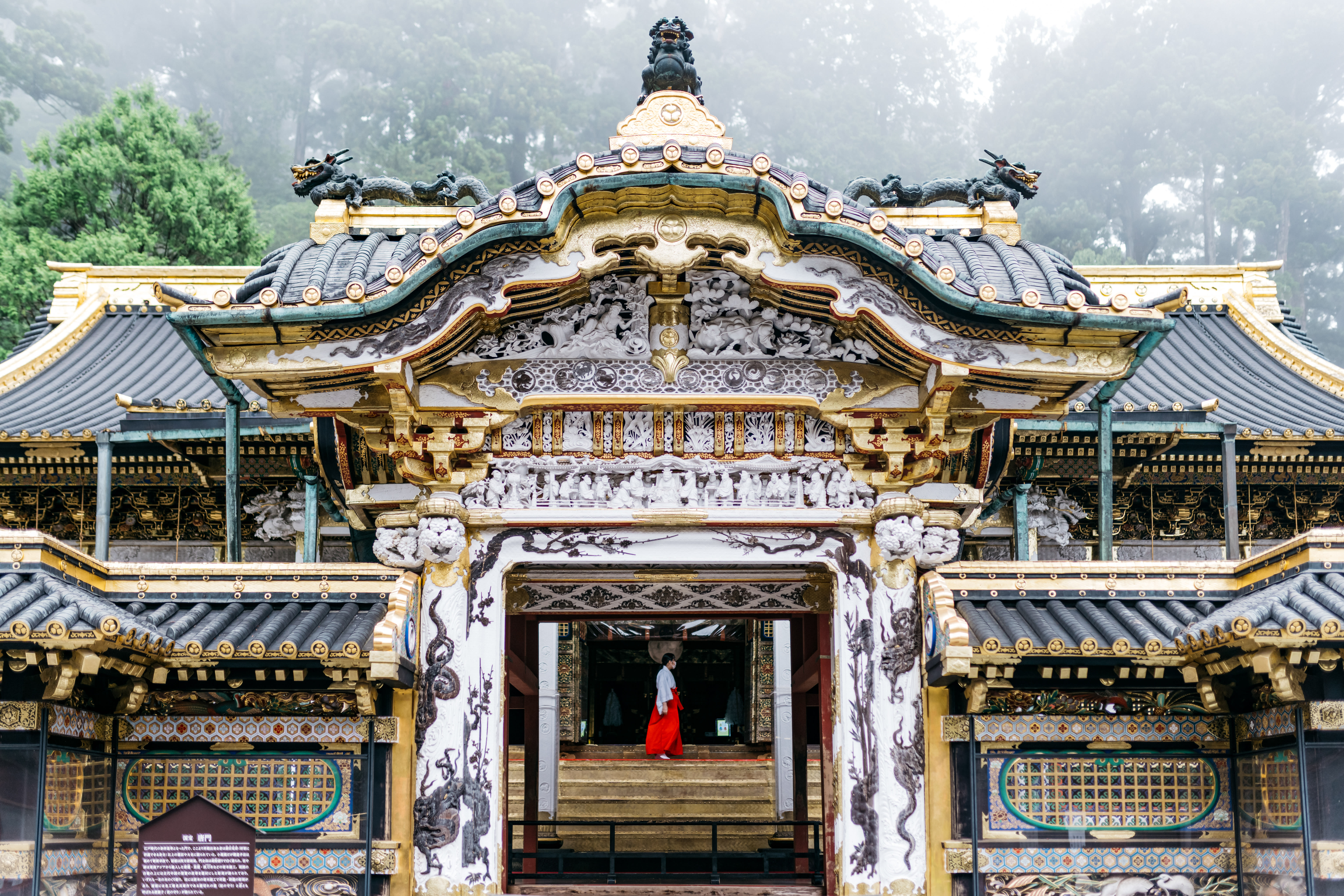Connect with ancient spiritual traditions and modern wellness practices in the national parks of Japan
In Japan’s spiritual traditions, cultivating a connection with nature is seen as important for your spiritual growth. Shinto and Buddhist pilgrimage routes link shrines, temples, and other sacred sites in remote natural settings; Shugendo ascetics train themselves by walking forested mountains and meditating under cold waterfalls; and the indigenous Ainu faith reveres the kamuy (spirit-deities) of the land and animals.
These traditions have strong links with Japan’s modern-day wellness activities, many of which are now popular worldwide. Mindfulness, awareness of one’s internal states and surroundings, is a recognized mental health practice, with roots in Buddhist meditation. Forest bathing (shinrin-yoku) combines mindfulness with the health benefits of walking in a forest environment. In Japan’s national parks, you can embrace slow and intentional travel as a way to reconnect with nature and increase your sense of peace and wellbeing.

Yoshino-Kumano National Park
The Kii Peninsula, south of Kyoto and Nara, is home to Yoshino-Kumano National Park. This mountainous region is crisscrossed with pilgrimage routes which have been in use for over 1000 years, and is steeped in myths and legends. You can learn the history and hear some of these ancient tales by walking the cobbled, cedar-lined Daimonzaka path to sacred Nachi Falls with a professional storyteller.
Reenact the time period of the stories by renting Heian-period clothes from Daimonzaka tea house and walking part of the Nakahechi route dressed in the elegant style of upper-class twelfth-century pilgrims.
Yoshino-Kumano National Park is also sacred to practitioners of Shugendo, a form of mountain worship which combines elements of Buddhism, Shintoism, Taoism, and Japanese folk beliefs. The faith involves undertaking ascetic practices in the mountains to gain supernatural powers and attain enlightenment. Learn about this unique form of worship on a three-day trip in the region, visiting Shugendo sites and enjoying natural hot springs in Dorogawa Onsen.

Ise-Shima National Park
Ise-Shima National Park with its extensive woodlands, mountains, and scenic locations is not only a beautiful place to visit, but plays an important role in Shintoism. The shrine of Ise Jingu—which you can visit with an expert tour guide—is where the sun goddess Amaterasu, one of the most important Shinto deities, is enshrined. Amaterasu is seen as the mythical ancestor of the Imperial family, who maintain strong ties to the shrine; the annual Kannamesai harvest festival includes an offering of rice harvested by the Emperor, and the chief priest or priestess always comes from the Imperial House.
Given these connections, Ise-Shima National Park is the perfect place to experience the spirituality of nature in Japan. A three-day driving itinerary introduces you to the peninsula’s spiritual heritage plus cultural activities like making accessories from locally cultivated pearls, or meeting and dining with ama free-divers who earn a living diving for shellfish and seaweed.
If you’re short on time, you could pick out a few activities from the itinerary, such as waterfall meditation at Shirataki Falls and sitting in a sauna in the forest. This is also an excellent place to try forest bathing, which involves mindful walking, meditation, and other activities to calm your mind and connect you to nature.

Akan-Mashu National Park
Ainu are an indigenous people of northern Japan. They have unique customs, language, and beliefs, and their culture is rooted in a spiritual reverence for the natural world. Ainu believe important living or created things to have a divine spirit called a kamuy (spirit-deity). Important examples include Kotan-kor-kamuy, god of the village (Blackiston’s fish owls); Kim-un-kamuy, god of the mountains (brown bears); and Repun-kamuy, god of the sea (orcas). You can learn about Ainu culture at several national parks in Hokkaido, including Akan-Mashu National Park.
Akan-Mashu National Park in Hokkaido is home to Ainu communities. At the Lake Akan Ainu Kotan, you can participate in Ainu-led tours and learn about Ainu crafts and immerse yourself in the Ainu worldview through performances at the Akanko Ainu Theater.
On a four-day trip, you can explore the national park on guided hikes up active volcanoes, canoe Kushiro River, and admire the deep blue of the lake inside Mashu Caldera. It also includes the 1.2-kilometer Kamuy Lumina night walk, which tells Ainu folktales through immersive digital art in the natural landscape around Lake Akan.

Myoko-Togakushi renzan National Park
Myoko-Togakushi renzan National Park, located in central Japan’s Nagano and Niigata prefectures, is a great place to learn more about Shugendo. Spread out over several linked sites in the mountains, Togakushi-jinja Shrine is a historically important pilgrimage destination for adherents of Shugendo. A three-day trip in the park offers an introduction to the natural landscapes and their role in this syncretic faith.
Some of the experiences covered in the itinerary are also doable as standalone activities. If you only have a couple of hours to spare, you can get a good overview of the landscapes on an e-bike tour which starts at Togakushi Campground. If you would rather focus on Shugendo, join a guided tour of Sekiyama-jinja Shrine, which includes access to usually inaccessible areas. The shrine has beautifully framed views of Mount Myoko. You can hike up this sacred mountain in around ten hours with an expert guide, before recharging with a hot-spring soak at Tsubame Onsen.

Daisen-Oki National Park
Daisen-Oki National Park covers areas in Shimane, Tottori and Okayama prefectures, including the Oki Islands situated around 60 kilometers off the Sea of Japan coast.
It offers many experiences which are focused on wellness and slow travel. On one three-hour route (April to November only) through the forests of Mount Daisen, a guide will lead you to Daisenji Temple to admire the twelfth-century Amidado Hall and the secluded Ogamiyama-jinja Okumiya Shrine. The low levels of light pollution attracts visitors keen on stargazing and night photography.
Farther east in Tottori prefecture, Mount Mitoku is home to Nageiredo Hall, a designated national treasure. The hall, which is part of Sanbutsuji Temple, is built on a cliff face and only accessible via a difficult hiking trail with steep paths and chain climbing points. It’s well worth the effort, with spots like Monjudo Hall on the way affording sweeping views of the mountainside and the temple grounds.
To really appreciate the spiritual heartland of Daisen-Oki National Park, you should spend a couple of nights. Over three days, you can tackle the route to Nageiredo Hall, try shinrin-yoku in the beech forests of Mount Daisen, explore the rugged coastline of Shimane, and visit one of Japan’s oldest and most important shrines in Izumo. For further spiritual adventures, explore the Oki Islands, known as “the islands of the gods”.

Bandai-Asahi National Park
In northern Honshu, Bandai-Asahi National Park is home to three sacred mountains known collectively as Dewa Sanzan: Mount Haguro, Mount Gassan, and Mount Yudono.
Mount Haguro is an important mountain for Shugendo practitioners, and there are various courses here which introduce you to the life of the yamabushi (mountain ascetics). Stay overnight at a shukubo (pilgrim lodge) and try a traditional plant-based meal of shojin-ryori temple cuisine. In the morning, you’ll wake to the sound of a conch-shell call to prayer.
To continue your yamabushi experience, join a guide to walk the pilgrimage routes through the mountains. There are many historical trails in Dewa Sanzan, such as the Rokujuri-goe Kaido trail, open from summer to autumn. They give you a chance to immerse yourself in the beech forests of Dewa Sanzan, passing serene waterfalls and timeworn monuments as you go.
In the eastern section of the national park, you can tackle a multi-day hike along the Azuma Ridgeline Trail. The route will take you through an impressive variety of landscapes, from the rock-dotted Ningyoishi area to the alpine flower-strewn wetlands of Okubo, and through a coniferous forest to Mount Nishi-Azuma.

Nikko National Park
Nikko National Park contains some of Japan’s most famous historic monuments, including the mausoleum Toshogu Shrine of Tokugawa Ieyasu, one of the unifiers of Japan. But the park’s attractions extend far beyond its ornate shrines and temples, and it encompasses mountains, plains, lakes, waterfalls, and hot springs in the larger Oku-Nikko area. Depending on the season, there are many different ways to experience these natural landscapes, from hiking and fat-bike tours to snowshoeing and cross-country skiing.

Nikko is a popular day-trip location due to its ease of access from Tokyo but it’s well worth staying for a few days to appreciate the variety of experiences available. In just three days, you can explore the UNESCO-listed shrines and temples, take a guided walk through the Ramsar marshlands of Senjogahara, and experience Shugendo rituals and waterfall meditation in Kirifuri Highland.
Just north of the scenic Lake Yunoko and Yudaki Falls is Nikkozan Onsenji, a rustic temple where you can try shakyo, Buddhist sutra writing. This meditative practice calms and focuses your mind, and you can follow it up with a relaxing soak in the temple’s natural hot springs.


















